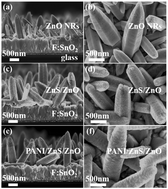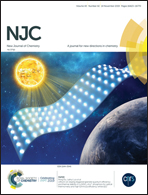A polyaniline-coated ZnS/ZnO/FTO photoelectrode for improving photocorrosion prevention and visible light absorption†
Abstract
To enhance the absorption of visible light for wide-bandgap semiconductors, methods such as sensitizing with nanoparticles or quantum dots and bandgap engineering using dopants have been reported. However, these can cause lattice mismatch, inherent disorder, or imperfect charge balance, which serve as recombination sites and significantly reduce the photocatalytic efficiency. Herein, photoelectrodes of polyaniline (PANI)/ZnS/ZnO on F:SnO2 (FTO) were fabricated to evaluate these issues and examine their interface microstructural and photocatalytic properties. The PANI films were applied as a visible light sensitizer and photocorrosion prevention layer for ZnS/ZnO. Subsequently, the photocurrent loss effect due to photocorrosion was systematically investigated. The photocurrent of the PANI/ZnS/ZnO photoelectrode measured at 0.5 V under white light illumination was approximately five times higher than that of the ZnO nanorod photoelectrode. This was attributed to photocorrosion prevention and visible light absorption by the PANI layers, due to proper energy band alignment of the hybrid heterojunction semiconductors.



 Please wait while we load your content...
Please wait while we load your content...